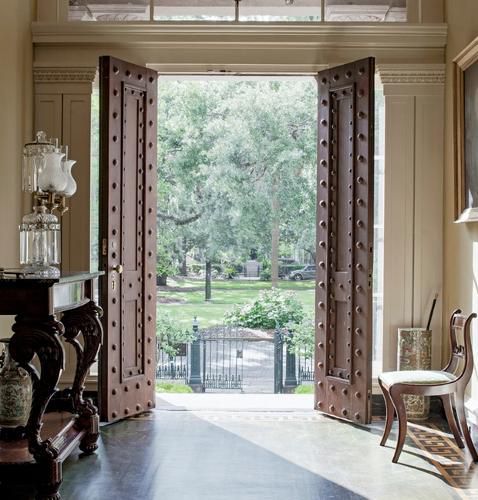Readings Newsletter
Become a Readings Member to make your shopping experience even easier.
Sign in or sign up for free!
You’re not far away from qualifying for FREE standard shipping within Australia
You’ve qualified for FREE standard shipping within Australia
The cart is loading…






After more than a century of hard work by Corporate Societies independently curating and stewarding American historic sites, the NSCDA launched a museum alliance in 2021--Great American Treasures (GAT). The number of properties has grown since the NY Society restored and opened the Van Courtlandt House in Manhattan's Bronx between 1895-1897. In 2025 the NSCDA will publish a hardcover volume to celebrate these historic treasures. Two previous publications also focused on NSCDA sites; Houses, History, and People (Richard Pratt, 1965) and Domestic Views (William Seale, 1992). In contrast to these books authored by men whose historical and architectural knowledge was extensive, the NSCDA's 2025 volume will be authored by female historians, curators, preservationists and horticulturists.
Great American Treasures features the NSCDA collection of historic places, which span the 16th to 20th centuries and highlights the residences of those who established themselves in America over the course of three centuries. It also features an array of buildings that speak to the diversity of cultures, people and architecture in a growing nation--from English Georgian houses on the eastern seaboard to a French Colonial dwelling in Missouri and Mission Houses in Hawai'i. This publication illuminates the stories and material culture of the wide range of individuals who contributed to the founding of the United States and to the development of America as a dynamic multi-cultural nation. The earliest property is Sulgrave Manor (1539), located eight miles from Banbury, England, and the most recent is a historic spot, Arlington National Cemetery's Spanish-American War Memorial (1902) that was dedicated by President Theodore Roosevelt and is the first memorial in the US erected by a national women's organization.
Many of the sites tell the stories of familiar historic figures like George and Martha Washington, John Adams, James and Dolley Madison, John Quincey Adams, Benjamin Franklin and George Mason. Other sites offer the narratives of figures who contributed to America's cultural heritage, such as artists John James Audubon and John Smibert, or those who helped to shape the country's mercantile system, like Frederick Van Cortlandt and James Logan. Some places were designed by well-known architects such as Robert Mills or McKim, Mead & White, while most were the work of unknown or little-known architects, builders, joiners and enslaved laborers. All provide a window into the rich diversity of men, women and children--free, indentured and enslaved--who came together to make America.
$9.00 standard shipping within Australia
FREE standard shipping within Australia for orders over $100.00
Express & International shipping calculated at checkout
After more than a century of hard work by Corporate Societies independently curating and stewarding American historic sites, the NSCDA launched a museum alliance in 2021--Great American Treasures (GAT). The number of properties has grown since the NY Society restored and opened the Van Courtlandt House in Manhattan's Bronx between 1895-1897. In 2025 the NSCDA will publish a hardcover volume to celebrate these historic treasures. Two previous publications also focused on NSCDA sites; Houses, History, and People (Richard Pratt, 1965) and Domestic Views (William Seale, 1992). In contrast to these books authored by men whose historical and architectural knowledge was extensive, the NSCDA's 2025 volume will be authored by female historians, curators, preservationists and horticulturists.
Great American Treasures features the NSCDA collection of historic places, which span the 16th to 20th centuries and highlights the residences of those who established themselves in America over the course of three centuries. It also features an array of buildings that speak to the diversity of cultures, people and architecture in a growing nation--from English Georgian houses on the eastern seaboard to a French Colonial dwelling in Missouri and Mission Houses in Hawai'i. This publication illuminates the stories and material culture of the wide range of individuals who contributed to the founding of the United States and to the development of America as a dynamic multi-cultural nation. The earliest property is Sulgrave Manor (1539), located eight miles from Banbury, England, and the most recent is a historic spot, Arlington National Cemetery's Spanish-American War Memorial (1902) that was dedicated by President Theodore Roosevelt and is the first memorial in the US erected by a national women's organization.
Many of the sites tell the stories of familiar historic figures like George and Martha Washington, John Adams, James and Dolley Madison, John Quincey Adams, Benjamin Franklin and George Mason. Other sites offer the narratives of figures who contributed to America's cultural heritage, such as artists John James Audubon and John Smibert, or those who helped to shape the country's mercantile system, like Frederick Van Cortlandt and James Logan. Some places were designed by well-known architects such as Robert Mills or McKim, Mead & White, while most were the work of unknown or little-known architects, builders, joiners and enslaved laborers. All provide a window into the rich diversity of men, women and children--free, indentured and enslaved--who came together to make America.